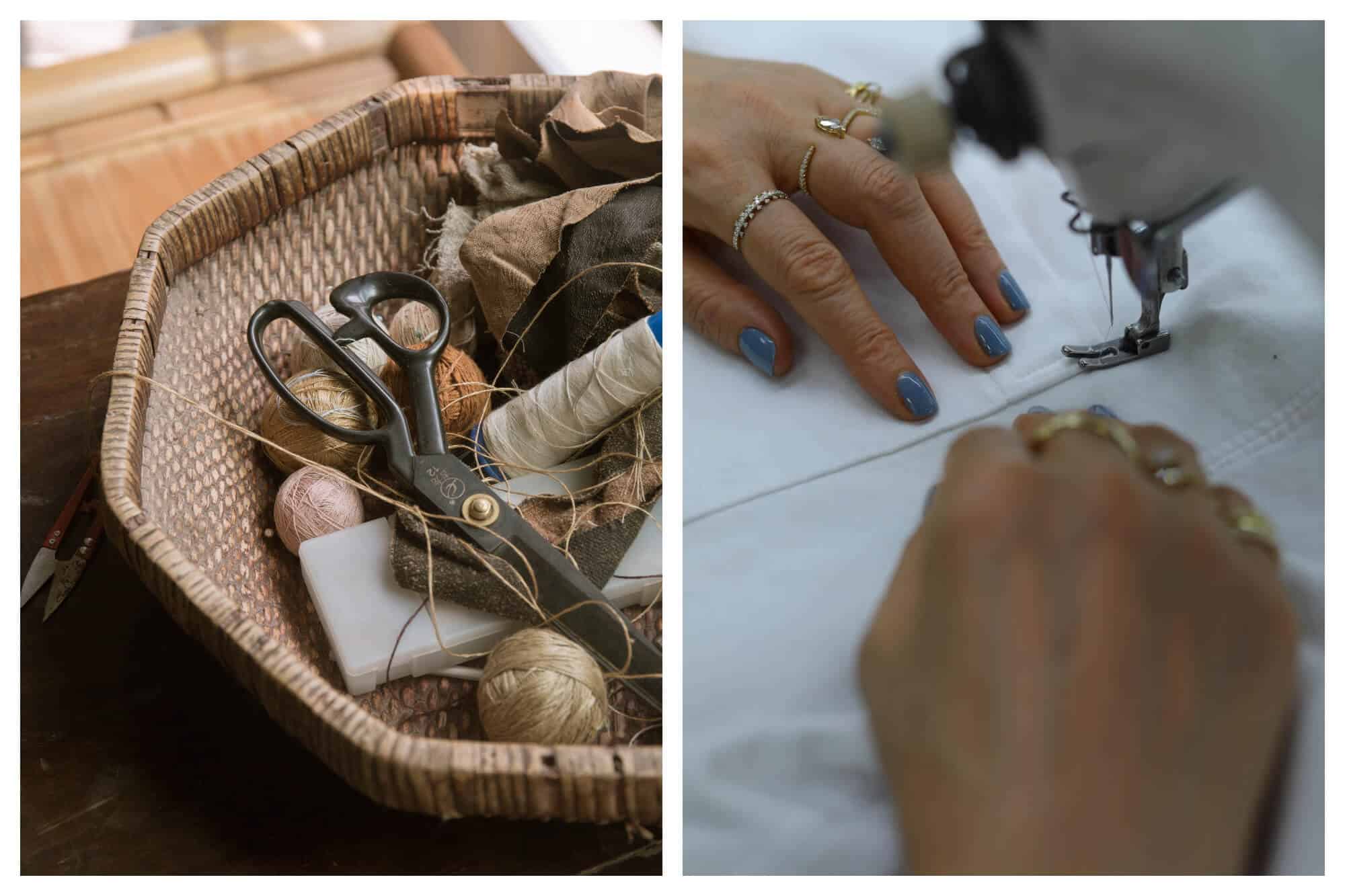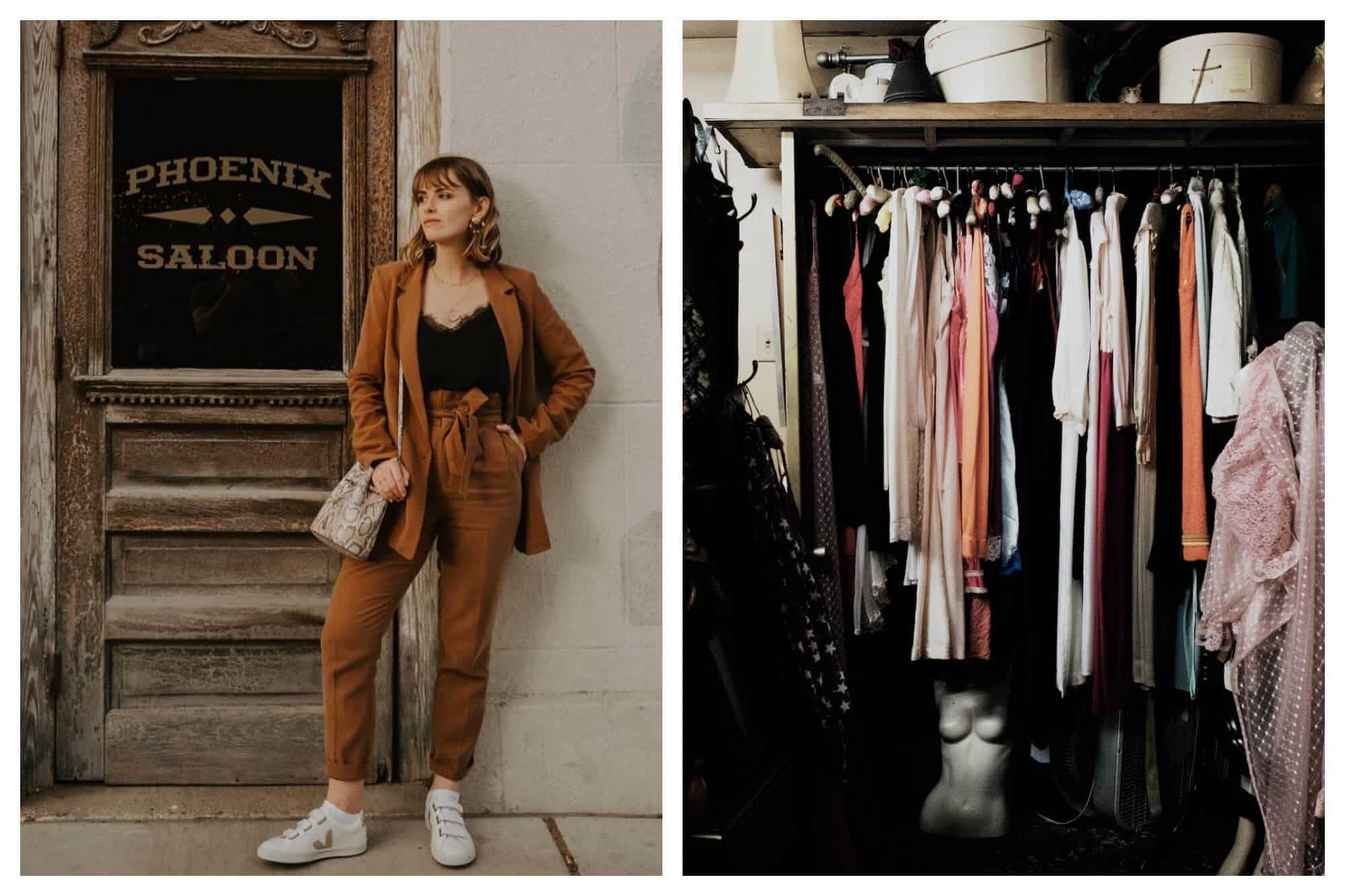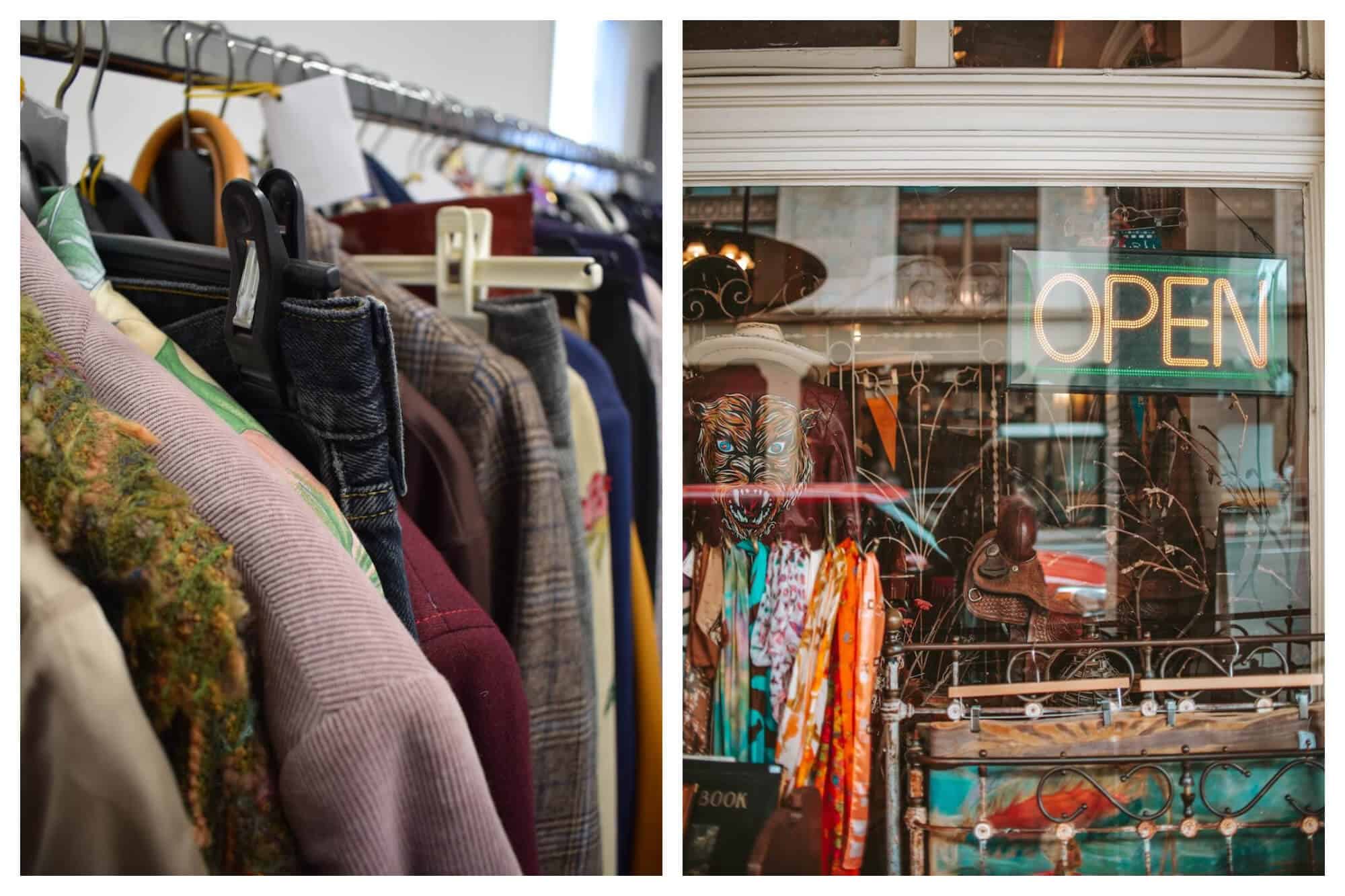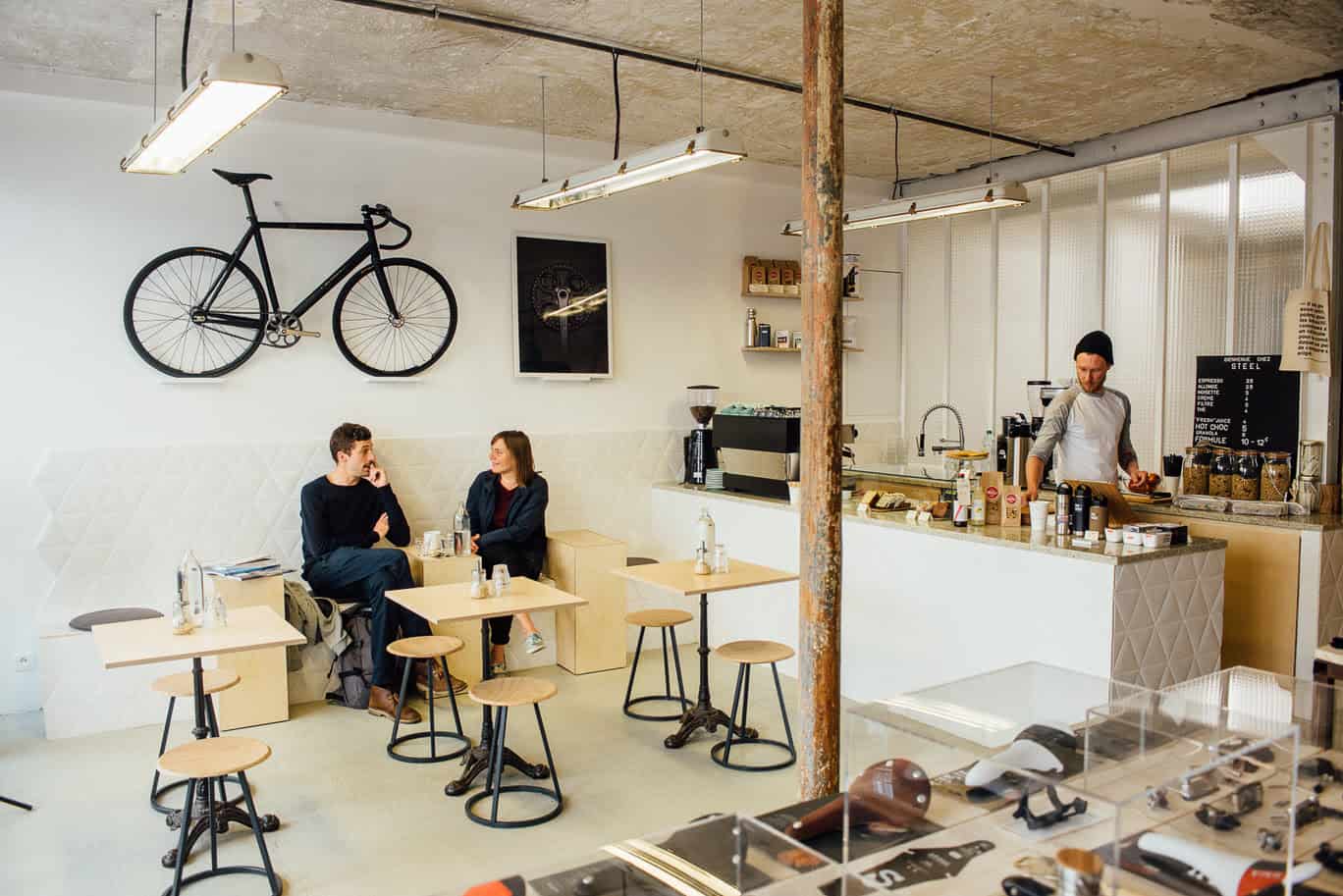One of the reasons I moved to Paris was to embrace international fashion. While it took me a while to reconcile a zero-waste lifestyle with my penchant for fashion, I have learned that the two can be very compatible. I’m getting better at it every day, and have incorporated zero-waste fashion, the French way, into my life.

Maintaining Your Clothes
For clothing, I start with the basics: taking good care of the clothing I have. The French are great role models for this. Local hardware stores, called quincailleries, have entire shelves of stain removers dedicated to specific stains, so you can save just about anything from getting tossed into the rag bin. A few aisles down you’ll find déboulocheur combs that help brush away the fuzz from well-worn sweaters.

Continue exploring and you’ll find cedar blocks and lavender oils to put in your closets to keep the moths away. If it’s too late and the moths have beat you to it, the French have a solution, bien sûr. The verb is stopper and the best stoppeuse I have found in Paris has fairy fingers that make it virtually impossible to find the holes she has repaired.

For other fabrics and to-save clothing in general, I visit Kamel, my tailor at L’Art de l’Aiguille. He has refitted a 1930s gown, relined a 1940s riding coat, and saved countless pieces from my family’s closets.

For that which Kamel can’t save, I use a Kintsukuroi approach. Kintsukuroi is the Japanese art of repairing broken pottery with gold to make the item even more precious in its second life. For fabrics, I prefer gold or other threads and embroidery a fix. If I have a sweater with a hole too big to fix, I pick some yarn in a contrasting color, and stitch a ring around the hole to make it look like it was meant to be there. For shirt sand jeans, I may use decorative stitches or sew on patches from fabric I’ve salvaged over the years.

Second-hand Shopping
When shopping for new clothing, I start with old-to-someone else, and hit up the treasure trove of consignment stores in Paris. Chercheminippes is a collection of shops on the rue du Cherche-Midi. They focus on everyday wear and are close to Maison de Fanfan, which has a small selection of very luxurious second-hand goods.

Used clothing stores are called fripperies in Paris, and the most popular maybe Free’P’Star in the Marais. It is full of young kids sifting for a find. Guerrisol is an international group dedicated to eco-responsible living and its chain of used clothing stores is often a source of mouth-dropping bargains. Finds include a silk designer scarf, worth hundreds new, but only five euros used.

Caring for Shoes
Shoes are no different from clothing. Zero waste starts with taking good care of what we have. For the French, that means going back to the quincaillerie and getting shoe polish and waterproof sprays to properly care for one’s shoes. Parisian men do this weekly; it’s often a Sunday night routine and a form of meditation for many. It also means regular visits to the cobbler to protect soles and resole before just throwing a pair out.

I still do shop for all the lovely clothing that first drew me to Paris, but now I look for natural fibers and pieces I can wear for many years to come. Because really, there is nothing chic about disposable fashion.
Addresses
Aldo Retouches – 99 Rue de Sèvres, 75006
L’Art de l’Aiguille – 8 rue Régis, 75007
Chercheminippes – 102 rue du Cherche Midi, 75006
Maison de Fanfan – 4 rue Mayet, 75006
Free’P’Star – 61 rue de la Verrerie, 75004
Guerrisol, 10 rue d’Aligre, 75012
Veja – 15 Rue de Poitou, 75003
K.Jacques – 16 rue Pavée, 75004
Related Links
- Looking for more French fashion? Check out our favorite French fashion looks for fall
- If you’re interested in thrift store shopping in Paris, here’s a great guide
- Want to shop zero waste in Paris? Head to La Maison du Zéro Déchet
Written by Sylvia Sabes for HiP Paris. Looking to travel? Check out Haven In for a fabulous vacation rental in Paris, France or Italy. Looking to rent long-term or buy in France or Italy? Ask us! We can connect you to our trusted providers for amazing service and rates.



RELATED ARTICLES
A Local’s Guide to the 3rd Arrondissement: Life in the Haut-Marais
by
Zoe Adams
Rue de Lévis: A Market Street in Paris’s 17th Arrondissement
by
Yvonne Hazelton
What to Wear in Paris in Spring
by
Caroline Camp
Valentine’s Day Gift Guide For Francophiles
by
Mia Baccei
Our Favorite Stinky French Cheese: What To Buy, Tips & Where To Shop
by
Casey Hatfield-Chiotti
French Inspired Gifts For College Girls
by
Dilyn Odoardi
The Ultimate Francophile Gift Guide
by
Maikka Piquemal
30 Books To Transport You To France
by
HiP Paris
Christmas 2024 at Galeries Lafayette – Get “LIT” this Holiday Season
by
Kathryn Kinley
Messy Nessy’s Paris Cabinet: Nostalgia and Offbeat Finds in the 5th Arrondissement
by
Sammy Royal
Father’s Day Gifts for Francophiles
by
HiP Paris
Christmas at Galeries Lafayette: The Most Dazzling Holiday Display in Paris
by
HiP Paris
Paris Chic/L.A. Cool: 15 Years of Clare V.
by
HiP Paris
French Creation & Savoir-Faire, Galeries Lafayette Paris Haussmann: 8 Discoveries
by
HiP Paris
Best French Chocolates for Easter
by
Ali Postma
French Fashion: Timeless, Chic and Elegant
by
Kasia Dietz
Happy New Year 2023! The Best of HiP Paris: Our Top 10 Posts in 2022
by
Maikka Piquemal
The French Foodie Gift Guide
by
Rachel Naismith
French-Inspired Gifts for Kids of All Ages
by
Amy Jacobson
Our Favorite Luxury Gifts
by
Amy Jacobson